-
 Bitcoin
Bitcoin $104,046.1769
-1.71% -
 Ethereum
Ethereum $2,485.5752
-5.30% -
 Tether USDt
Tether USDt $1.0006
0.02% -
 XRP
XRP $2.1647
-2.66% -
 BNB
BNB $649.6888
-2.16% -
 Solana
Solana $151.8334
-1.51% -
 USDC
USDC $1.0000
0.03% -
 Dogecoin
Dogecoin $0.1790
-6.82% -
 TRON
TRON $0.2797
2.33% -
 Cardano
Cardano $0.6615
-3.67% -
 Hyperliquid
Hyperliquid $34.9191
-1.45% -
 Sui
Sui $3.1764
-1.51% -
 Chainlink
Chainlink $13.3107
-4.94% -
 Avalanche
Avalanche $19.5484
-4.64% -
 Stellar
Stellar $0.2637
-1.74% -
 UNUS SED LEO
UNUS SED LEO $8.8723
-2.42% -
 Toncoin
Toncoin $3.1512
-3.02% -
 Bitcoin Cash
Bitcoin Cash $387.8985
-4.13% -
 Shiba Inu
Shiba Inu $0.0...01259
-2.66% -
 Hedera
Hedera $0.1668
-1.48% -
 Litecoin
Litecoin $85.5041
-3.95% -
 Polkadot
Polkadot $3.9557
-2.77% -
 Monero
Monero $328.6673
-1.91% -
 Ethena USDe
Ethena USDe $1.0012
0.01% -
 Bitget Token
Bitget Token $4.6182
-1.67% -
 Dai
Dai $1.0000
0.02% -
 Pepe
Pepe $0.0...01123
-6.17% -
 Pi
Pi $0.6204
-3.17% -
 Aave
Aave $249.9711
-5.86% -
 Uniswap
Uniswap $6.0212
-6.03%
Core Technologies and Implementation Paths of Bitcoin Quantitative Trading
Bitcoin quantitative trading uses algorithmic trading, machine learning, and big data to execute precise strategies, requiring robust infrastructure and continuous improvement.
May 30, 2025 at 11:01 pm

Bitcoin quantitative trading represents a sophisticated approach to cryptocurrency investment, leveraging advanced algorithms and data analysis to make trading decisions. This method of trading is grounded in the use of core technologies that enable traders to execute strategies with precision and efficiency. Understanding these technologies and the paths to their implementation is crucial for anyone looking to delve into the world of Bitcoin quantitative trading.
Core Technologies in Bitcoin Quantitative Trading
The foundation of Bitcoin quantitative trading rests on several key technologies, each playing a vital role in the trading process.
Algorithmic Trading
Algorithmic trading is the cornerstone of quantitative trading. It involves the use of computer algorithms to buy and sell Bitcoin based on predefined criteria. These algorithms can analyze market data at a speed and volume unattainable by human traders, making them indispensable for quantitative strategies. The algorithms can be programmed to execute trades based on various factors such as price movements, volume, and even sentiment analysis derived from social media and news sources.
Machine Learning and Artificial Intelligence
Machine learning (ML) and artificial intelligence (AI) enhance the capabilities of algorithmic trading by allowing systems to learn from data and improve over time. In the context of Bitcoin trading, ML models can be trained to predict price movements based on historical data. AI can further refine these predictions by incorporating real-time data and adapting to changing market conditions. These technologies enable traders to develop more sophisticated and adaptive trading strategies.
Data Analysis and Big Data
Data analysis and big data technologies are essential for processing the vast amounts of information required for quantitative trading. Bitcoin markets generate enormous volumes of data every second, including transaction data, order book data, and market sentiment data. Advanced data analysis tools and big data platforms allow traders to sift through this data to identify patterns and trends that can inform their trading decisions.
High-Frequency Trading (HFT)
High-frequency trading (HFT) is a subset of algorithmic trading that involves executing a large number of orders at very high speeds. HFT strategies can capitalize on small price discrepancies in the Bitcoin market, often holding positions for only fractions of a second. This technology requires advanced infrastructure, including low-latency connections and powerful computing systems, to operate effectively.
Implementation Paths for Bitcoin Quantitative Trading
Implementing a Bitcoin quantitative trading system involves several steps, each requiring careful planning and execution.
Setting Up the Trading Infrastructure
The first step in implementing a quantitative trading system is to set up the necessary infrastructure. This includes:
- Selecting a trading platform: Choose a platform that supports API access for automated trading. Popular choices include Binance, Kraken, and Coinbase Pro.
- Setting up a server: A dedicated server with high computational power and low latency is essential for executing trades quickly. Cloud services like Amazon Web Services (AWS) or Google Cloud can be used for this purpose.
- Installing trading software: Software like MetaTrader or custom-built solutions can be used to implement trading algorithms.
Developing the Trading Algorithm
Developing a trading algorithm involves several key tasks:
- Defining the strategy: Clearly define the trading strategy based on market analysis and trading objectives. This could involve trend-following, mean reversion, or arbitrage strategies.
- Coding the algorithm: Write the code to implement the strategy. This can be done using programming languages like Python, which offers libraries like Pandas and NumPy for data manipulation and analysis.
- Backtesting the algorithm: Use historical data to test the algorithm's performance. This step helps identify potential issues and refine the strategy before deploying it in live trading.
Integrating Data Feeds
Integrating data feeds is crucial for providing the algorithm with the necessary information to make trading decisions:
- Selecting data sources: Choose reliable data sources for real-time market data, such as exchanges and data providers like CoinAPI or CryptoCompare.
- Setting up data pipelines: Implement data pipelines to stream data into the trading system. This can be done using technologies like Apache Kafka or AWS Kinesis.
- Processing and storing data: Use big data technologies like Hadoop or Spark to process and store the data efficiently.
Deploying and Monitoring the System
Once the system is developed, it needs to be deployed and monitored:
- Deploying the system: Deploy the trading algorithm on the server and connect it to the trading platform via API. Ensure that all components are functioning correctly.
- Monitoring performance: Continuously monitor the system's performance and adjust the algorithm as needed. Use monitoring tools to track key metrics like profitability, latency, and system health.
- Risk management: Implement risk management protocols to protect against significant losses. This can include setting stop-loss orders and position limits.
Continuous Improvement
Quantitative trading is an ongoing process that requires continuous improvement:
- Analyzing results: Regularly analyze the trading results to identify areas for improvement. This can involve tweaking the algorithm or exploring new strategies.
- Updating the system: Keep the trading system updated with the latest market data and technological advancements. This ensures that the system remains competitive and effective.
- Learning from the market: Stay informed about market trends and developments. Incorporate new insights into the trading strategy to adapt to changing conditions.
Frequently Asked Questions
Q: How does machine learning improve Bitcoin trading strategies?
A: Machine learning improves Bitcoin trading strategies by enabling systems to learn from historical data and adapt to new information. ML models can identify patterns and trends that may not be visible to human traders, allowing for more accurate predictions of price movements. Additionally, ML can optimize trading parameters and adapt strategies in real-time, enhancing overall performance.
Q: What are the risks associated with high-frequency trading in Bitcoin markets?
A: High-frequency trading in Bitcoin markets carries several risks. These include market risk, where rapid price changes can lead to significant losses; operational risk, where technical failures or connectivity issues can disrupt trading; and regulatory risk, as HFT may face scrutiny and potential restrictions from regulatory bodies. Additionally, the high speed and volume of trades can exacerbate market volatility.
Q: Can quantitative trading be done without extensive programming knowledge?
A: While extensive programming knowledge can be beneficial, it is possible to engage in quantitative trading without it. Many platforms offer user-friendly interfaces and pre-built algorithms that can be customized with minimal coding. Additionally, there are services that provide fully managed quantitative trading solutions, allowing traders to focus on strategy development without needing to handle the technical implementation.
Q: What role does data quality play in the success of quantitative trading strategies?
A: Data quality is crucial for the success of quantitative trading strategies. Accurate and timely data ensures that the algorithms have reliable information to base their decisions on. Poor data quality can lead to incorrect trading signals, resulting in suboptimal performance and potential losses. Therefore, selecting high-quality data sources and maintaining robust data pipelines are essential components of a successful quantitative trading system.
Disclaimer:info@kdj.com
The information provided is not trading advice. kdj.com does not assume any responsibility for any investments made based on the information provided in this article. Cryptocurrencies are highly volatile and it is highly recommended that you invest with caution after thorough research!
If you believe that the content used on this website infringes your copyright, please contact us immediately (info@kdj.com) and we will delete it promptly.
- President Donald Trump on Thursday announced a preliminary trade agreement with the UK—his first since escalating global tariffs last month—marking a politically strategic breakthrough for both his administration and UK Prime Minister Keir Starmer.
- 2025-06-06 22:00:25
- Bitcoin (BTC) Finally Prints $100,000 on Major Exchanges for the First Time Since February
- 2025-06-06 22:00:25
- Bitcoin's Image May Evolve Beyond 'Digital Gold,' as Political Support Rises
- 2025-06-06 21:55:13
- Ethereum (ETH) Flashes Bullish Signal Ahead of Potential Rally; SHIB Dips 10% More & BlockDAG Confirms Launch Readiness
- 2025-06-06 21:55:13
- World Liberty Financial USD (USD1) Will Be Listed in the Innovation Zone on May 9, 2025
- 2025-06-06 21:50:13
- Bitcoin Reclaims the $100,000 Price Level
- 2025-06-06 21:50:13
Related knowledge
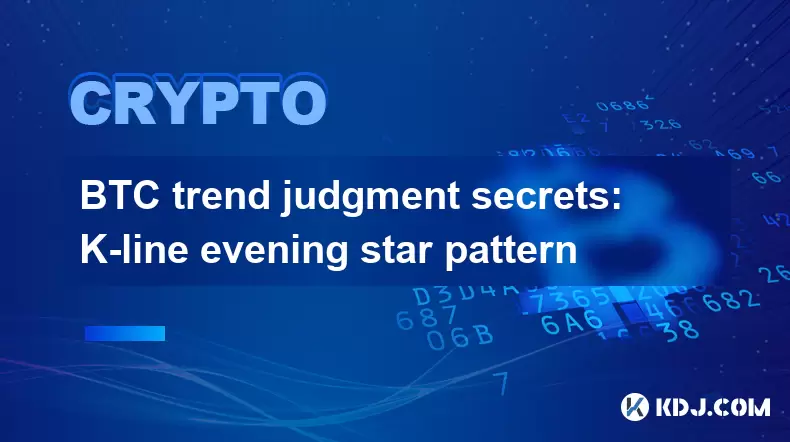
BTC trend judgment secrets: K-line evening star pattern
Jun 01,2025 at 07:01am
Introduction to the Evening Star PatternThe K-line evening star pattern is a critical bearish reversal pattern that traders in the cryptocurrency circle often use to predict potential downturns in the Bitcoin (BTC) market. This pattern consists of three candles and typically appears at the end of an uptrend, signaling that the bulls may be losing contro...
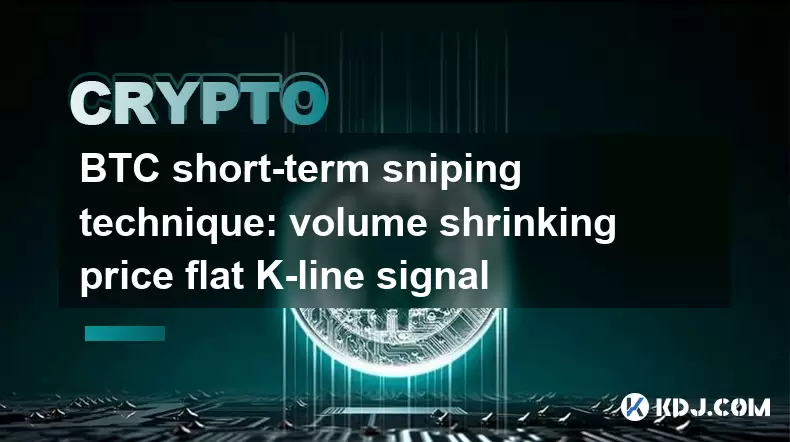
BTC short-term sniping technique: volume shrinking price flat K-line signal
Jun 01,2025 at 08:01pm
BTC short-term sniping technique: volume shrinking price flat K-line signal In the world of cryptocurrency trading, mastering short-term sniping techniques can significantly enhance a trader's ability to capitalize on quick market movements. One effective method that traders often employ is the volume shrinking price flat K-line signal. This technique i...
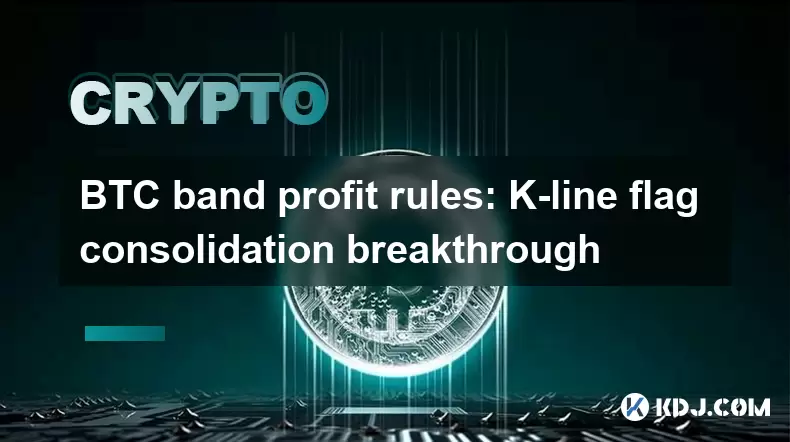
BTC band profit rules: K-line flag consolidation breakthrough
Jun 03,2025 at 11:49am
Introduction to BTC Band Profit RulesBTC band profit rules are a set of trading strategies specifically designed for Bitcoin trading. One of the key concepts within these rules is the K-line flag consolidation breakthrough. This technique helps traders identify potential entry and exit points in the market by analyzing the patterns formed on the K-line ...
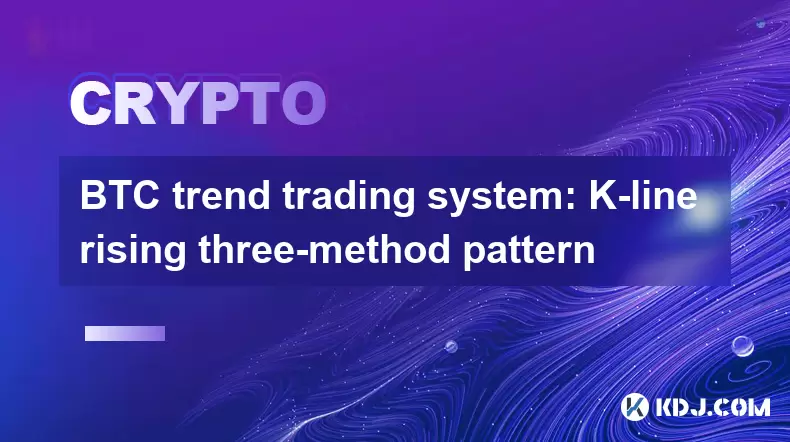
BTC trend trading system: K-line rising three-method pattern
Jun 05,2025 at 06:21pm
BTC trend trading system: K-line rising three-method pattern The world of cryptocurrency trading is filled with various strategies and patterns that traders use to make informed decisions. Among these, the K-line rising three-method pattern stands out as a significant indicator for trend traders, especially in the context of Bitcoin (BTC) trading. This ...

BTC short-term trading secrets: MACD zero axis breakthrough strategy
Jun 04,2025 at 04:28am
BTC short-term trading secrets: MACD zero axis breakthrough strategy In the volatile world of Bitcoin trading, short-term strategies can be particularly lucrative if executed correctly. One such strategy that has garnered attention among traders is the MACD zero axis breakthrough strategy. This technique leverages the Moving Average Convergence Divergen...
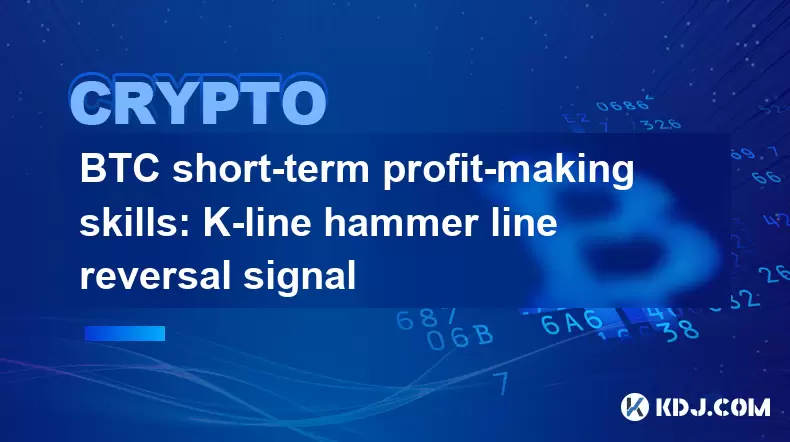
BTC short-term profit-making skills: K-line hammer line reversal signal
Jun 04,2025 at 12:07pm
BTC short-term profit-making skills: K-line hammer line reversal signal In the world of cryptocurrency trading, understanding and interpreting various candlestick patterns can significantly enhance a trader's ability to make profitable decisions. One such pattern that traders often look for is the hammer line, which is a powerful reversal signal. In thi...

BTC trend judgment secrets: K-line evening star pattern
Jun 01,2025 at 07:01am
Introduction to the Evening Star PatternThe K-line evening star pattern is a critical bearish reversal pattern that traders in the cryptocurrency circle often use to predict potential downturns in the Bitcoin (BTC) market. This pattern consists of three candles and typically appears at the end of an uptrend, signaling that the bulls may be losing contro...

BTC short-term sniping technique: volume shrinking price flat K-line signal
Jun 01,2025 at 08:01pm
BTC short-term sniping technique: volume shrinking price flat K-line signal In the world of cryptocurrency trading, mastering short-term sniping techniques can significantly enhance a trader's ability to capitalize on quick market movements. One effective method that traders often employ is the volume shrinking price flat K-line signal. This technique i...

BTC band profit rules: K-line flag consolidation breakthrough
Jun 03,2025 at 11:49am
Introduction to BTC Band Profit RulesBTC band profit rules are a set of trading strategies specifically designed for Bitcoin trading. One of the key concepts within these rules is the K-line flag consolidation breakthrough. This technique helps traders identify potential entry and exit points in the market by analyzing the patterns formed on the K-line ...

BTC trend trading system: K-line rising three-method pattern
Jun 05,2025 at 06:21pm
BTC trend trading system: K-line rising three-method pattern The world of cryptocurrency trading is filled with various strategies and patterns that traders use to make informed decisions. Among these, the K-line rising three-method pattern stands out as a significant indicator for trend traders, especially in the context of Bitcoin (BTC) trading. This ...

BTC short-term trading secrets: MACD zero axis breakthrough strategy
Jun 04,2025 at 04:28am
BTC short-term trading secrets: MACD zero axis breakthrough strategy In the volatile world of Bitcoin trading, short-term strategies can be particularly lucrative if executed correctly. One such strategy that has garnered attention among traders is the MACD zero axis breakthrough strategy. This technique leverages the Moving Average Convergence Divergen...

BTC short-term profit-making skills: K-line hammer line reversal signal
Jun 04,2025 at 12:07pm
BTC short-term profit-making skills: K-line hammer line reversal signal In the world of cryptocurrency trading, understanding and interpreting various candlestick patterns can significantly enhance a trader's ability to make profitable decisions. One such pattern that traders often look for is the hammer line, which is a powerful reversal signal. In thi...
See all articles


























![[Financial Decryption] Stablecoin - The King of Cash in the Blockchain World: From USDT to USDC, Hong Kong's policy dividends ignite three major investment sectors, global case in-depth analysis and investment strategies [Financial Decryption] Stablecoin - The King of Cash in the Blockchain World: From USDT to USDC, Hong Kong's policy dividends ignite three major investment sectors, global case in-depth analysis and investment strategies](/uploads/2025/06/06/cryptocurrencies-news/videos/financial-decryption-stablecoin-king-cash-blockchain-usdt-usdc-hong-kong-policy-dividends-ignite-major-investment-sectors-global-depth-analysis-investment-strategies/68427d141fb0f_image_500_375.webp)






























































